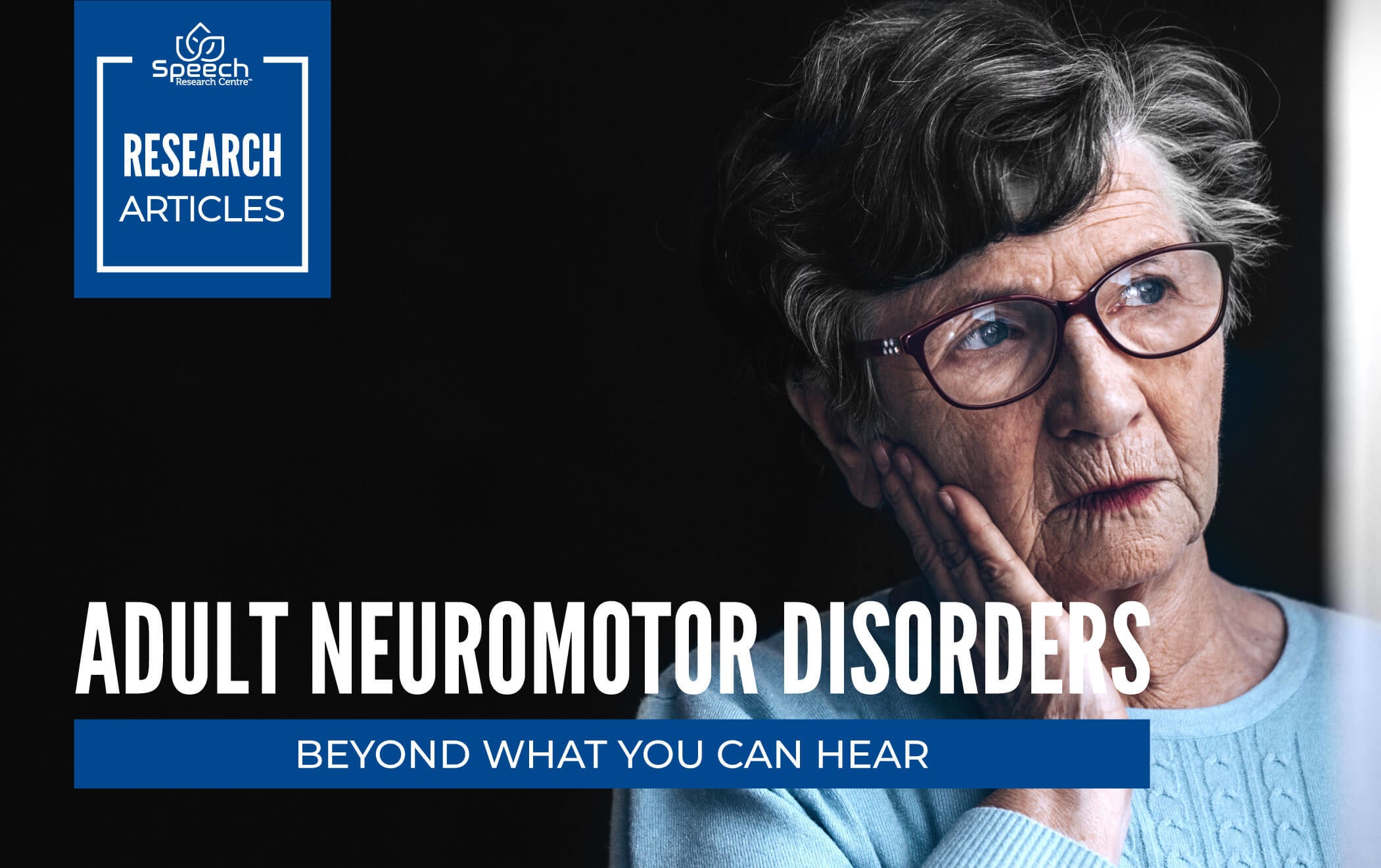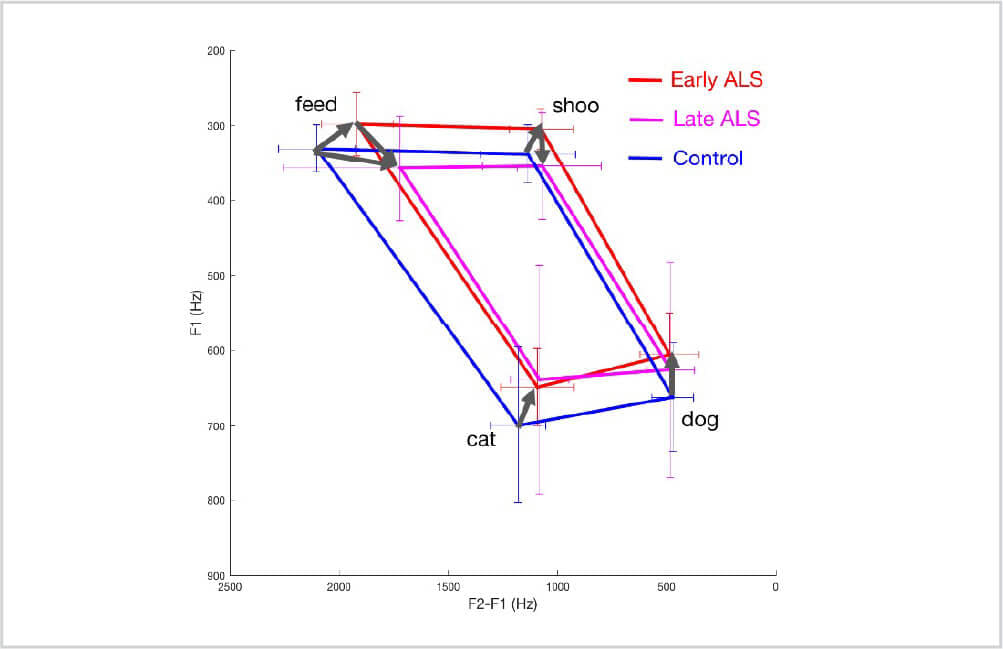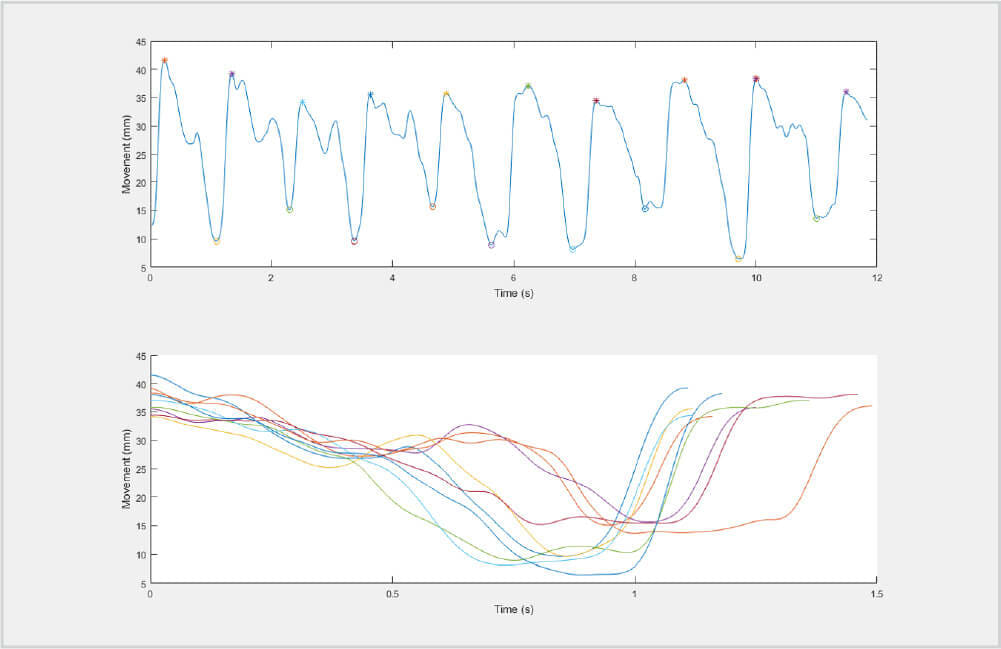
Intro: While an expert’s auditory-perceptual judgement remains the gold standard for clinical speech assessments, quantitative measures have shown promise for detecting critical subclinical changes in the speech system that are not captured by our ears.
Summary: Many neuromotor disorders such as Amyotrophic lateral sclerosis (ALS), Parkinson’s disease, cerebral palsy, and stroke have a detrimental effect on the ability of speech production, resulting in social isolation and reduced quality of life. Timely and accurate diagnosis of speech impairments in these disorders is the key to implement effective treatments.
In Dr. Panying Rong’s lab, the focus is on developing novel quantitative measurement tools to complement traditional auditory-perceptual evaluations for improving the efficacy of motor speech assessments. Dr. Rong’s lab has established a multimodal framework combining physiologic, kinematic, and acoustic measurements to record facial muscle activities, movements of the speech organs (e.g., tongue, jaw, lips), and acoustic output of speech.
Based on the multimodal recordings, data-mining approaches are used to identify quantitative measures for detecting and tracking subclinical changes in the speech motor system. Dr. Rong’s team has conducted a variety of studies to evaluate the diagnostic and prognostic utility of these quantitative measures in assessing speech impairments in ALS. The findings suggest that these quantitative measures are able to detect physiologic deficits in the speech system, such as abnormal facial muscle coordination, slowed and unstable movements of the speech organs, which occur much earlier than the onset of clinical speech symptoms in these disorders.
Moreover, the early changes in these quantitative measures are predictive of the trajectory of speech decline in later disease stages. These findings provide evidence for the utility of quantitative measures as novel diagnostic and prognostic markers, which may be integrated into future clinical practice to guide the assessment and management of speech impairments in ALS.
To follow Dr. Panying Rong’s work, please visit: http://splh.ku.edu/panying-rong
Figure 1. Changes in phonetic distinctiveness of vowels. Average vowel space with error bars (i.e., ±2 SEs for F1 and F2–F1 for each vowel) for healthy controls (blue) and individuals at the early (red), and late (magenta) stages of bulbar amyotrophic lateral sclerosis.
Figure 2. Articulatory movement trajectories.
 Figure 1. Changes in phonetic distinctiveness of vowels.
Figure 1. Changes in phonetic distinctiveness of vowels.
 Figure 2. Articulatory movement trajectories.
Figure 2. Articulatory movement trajectories.
References:
Rong, P., & Green, J. R. (2019). Predicting speech intelligibility based on spatial tongue–jaw coupling in persons with amyotrophic lateral sclerosis: The impact of tongue weakness and jaw adaptation. Journal of Speech, Language, and Hearing Research, 62(8S), 3085-3103.
Rong, P. (2019). The effect of tongue–jaw coupling on phonetic distinctiveness of vowels in amyotrophic lateral sclerosis. Journal of Speech, Language, and Hearing Research, 62(9), 3248-3264.
Rong, P., Yunusova, Y., Wang, J., Zinman, L., Pattee, G. L., Berry, J. D., ... & Green, J. R. (2016). Predicting speech intelligibility decline in amyotrophic lateral sclerosis based on the deterioration of individual speech subsystems. PloS one, 11(5), e0154971.
Rong, P., Yunusova, Y., Wang, J., & Green, J. R. (2015). Predicting early bulbar decline in amyotrophic lateral sclerosis: A speech subsystem approach. Behavioural neurology, https://doi.org/10.1155/2015/183027.
https://pubs.asha.org/doi/10.1044/2018_JSLHR-S-CSMC7-18-0116
